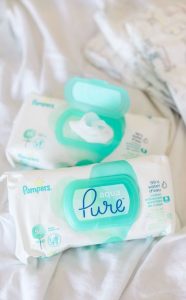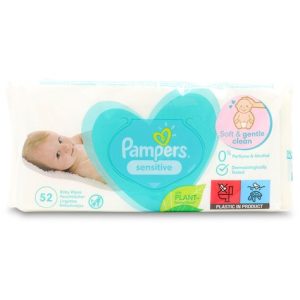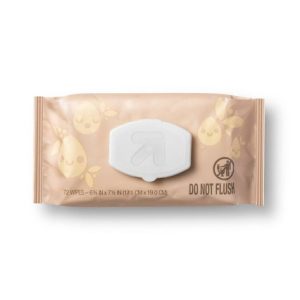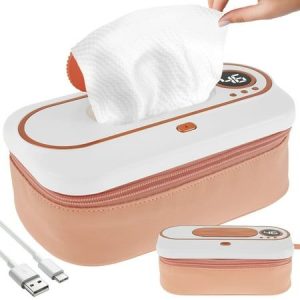Introduction
There’s no doubt that keeping your baby clean is a full-time job! Diaper changes, spit-up messes, and playtime explorations can leave you reaching for wipes constantly. While disposable wipes are convenient, they can be expensive and may contain harsh chemicals. This article explores safe and cost-effective alternatives for keeping your baby clean, focusing on DIY wipes and other reusable options.
Why Consider Alternatives to Disposable Wipes?
There are several reasons to consider alternatives to disposable wipes:
- Cost: Disposable wipes can add up quickly, especially with frequent diaper changes.
- Environment: Disposable wipes contribute to landfill waste.
- Chemicals: Some disposable wipes contain chemicals or fragrances that may irritate your baby’s delicate skin.

The Magic of Cloth Wipes
Cloth wipes are a reusable and eco-friendly alternative to disposable wipes. They can be made from various soft, absorbent fabrics like flannel or cotton. Here’s what you’ll need to get started:
Fabric:
Choose soft, absorbent fabrics like flannel or cotton. Avoid materials with harsh dyes or chemicals.
Scissors:
Cut the fabric into squares or rectangles for individual wipes.
Storage container:
An airtight container with a lid is ideal for storing clean wipes.

Making DIY Wipe Solution
There are several options for creating a gentle cleansing solution for your cloth wipes. Here are two popular choices:
- Water and Castile Soap: Mix distilled or filtered water with a gentle, castile soap. Test the solution on a small area of your baby’s skin before using it all over.
- Witch Hazel and Aloe Vera: Combine witch hazel, known for its cleansing properties, with aloe vera for a soothing touch. Always dilute witch hazel with water before using it on your baby’s skin.
Using Cloth Wipes
- Wet a cloth wipe with your chosen solution.
- Gently clean your baby’s diaper area or any messes.
- Rinse the used wipe in warm water after each use.
- Store soiled wipes in a separate container until laundry day.
- Wash cloth wipes with gentle detergent on a regular basis.

Beyond Cloth Wipes: Other Options for Keeping Baby Clean
While cloth wipes are a popular choice, there are other ways to keep your baby clean without disposable wipes:
- Warm Washcloths: Simple warm washcloths with water can be effective for cleaning messes. Wet washcloths are easy to transport in a diaper bag for on-the-go cleaning.
- Cotton Balls and Water: Cotton balls moistened with water can be used for delicate cleaning around the eyes or nose. Discard used cotton balls after each use.
- Baby Wash and Washcloths: For diaper changes, consider using a gentle baby wash and washcloths for a thorough clean. Rinse the area well and pat dry with a clean washcloth.
Keeping Your Baby Clean and Safe
No matter which cleaning method you choose, here are some essential tips for keeping your baby clean and safe:
- Always wash your hands thoroughly before and after diaper changes or cleaning your baby.
- Cleanse gently: Use a gentle touch when cleaning your baby’s delicate skin. Avoid harsh rubbing or scrubbing.
- Pat dry: Always pat the cleaned area dry with a soft cloth or towel to prevent irritation.
- Water is often enough: Water is often the best cleanser for most baby messes. Harsh chemicals are not typically necessary.
- Consult your pediatrician: If you have any concerns about your baby’s skin or the best cleaning methods, consult your pediatrician for guidance.

Keeping your baby clean doesn’t require relying solely on disposable wipes. By exploring safe and reusable alternatives like cloth wipes, washcloths, or gentle baby washes, you can create a more eco-friendly and cost-effective diaper changing routine. Remember, the most important thing is to keep your baby clean and comfortable while prioritizing their delicate skin.
Absolutely! Here’s how to continue the article on DIY baby wipes with a focus on safety and reusability:
Keeping Cloth Wipes Clean and Safe for Baby
- Washing Routine: Wash cloth wipes after each use with a gentle, fragrance-free detergent. Hot water (at least 140°F or 60°C) is recommended to kill germs. Always follow your washing machine’s instructions.
- Drying Thoroughly: Ensure cloth wipes are completely dry before storing them. This helps prevent the growth of bacteria. Tumble dry on low heat or air dry completely.
- Discarding Worn Wipes: Inspect cloth wipes regularly for fraying, thinning, or staining. Discard any damaged wipes to avoid irritation or potential choking hazards for your baby.
Additional Tips for Safe and Easy Cleaning
- Separate Solutions: Consider having separate wipe solutions for the diaper area and other messes like spit-up. This helps prevent cross-contamination.
- Label Containers: Clearly label your wipe solution containers to avoid confusion.
- Travel-Friendly Options: When venturing out, consider storing moistened wipes in a wipeable container or sealed bag. Alternatively, bring a spray bottle filled with your chosen solution and use it with clean washcloths on the go.
By following these tips, you can create a safe and effective diaper changing routine using DIY cloth wipes. Remember, the key is to prioritize gentle cleaning methods and keep everything clean and sanitary for your baby’s delicate skin.

DIY Wipes: Variations and Personalization
While the basic steps for cloth wipes involve fabric, solution, and cleaning, you can personalize your routine to suit your preferences. Here are some ideas:
- Fabric Choices: Flannel and cotton are popular choices, but other soft, absorbent fabrics like bamboo or hemp can also be used. Consider experimenting to find what feels gentlest on your baby’s skin.
- Adding Essential Oils (Optional): A few drops of calming essential oils like lavender or chamomile can be added to the wipe solution (after diluting them properly). However, remember that essential oils can irritate some babies’ skin, so always perform a patch test first on a small area and consult your pediatrician if you have any concerns.
- Pre-Moistened vs. Spray and Wipe: You can create a pre-moistened wipe solution and store them in a container for easy use. Alternatively, some parents prefer a spray bottle filled with the solution and use it with dry washcloths as needed.
By personalizing your DIY wipes routine and adding a touch of fun, you can create a system that works well for both you and your baby. Remember, the most important thing is to keep your baby clean and comfortable while prioritizing safe and gentle cleaning methods.





